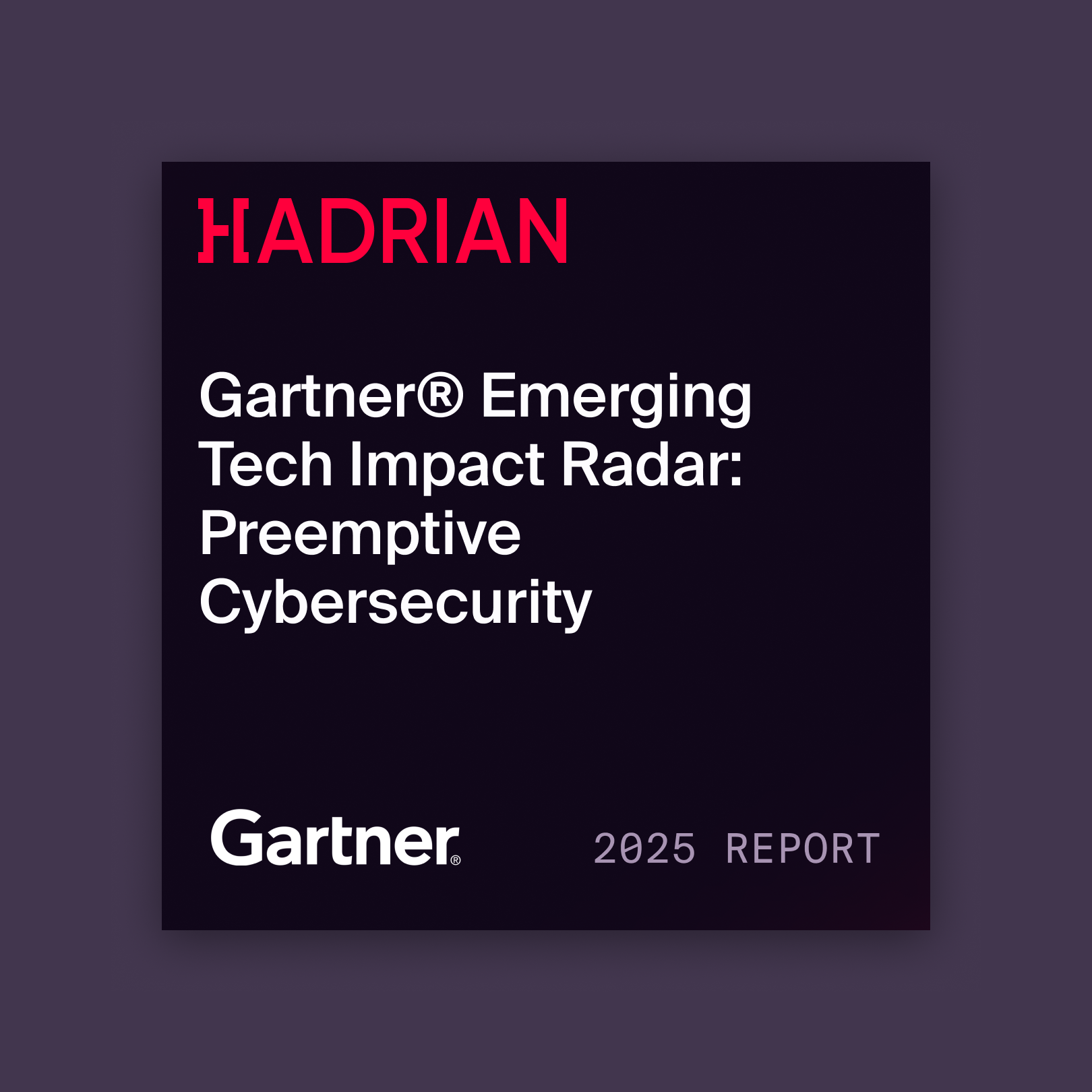
Like many ethical hackers, I’ve dabbled in bug bounty work. It’s never been my main focus, but it has always been an activity I enjoy. Some phenomenal hackers are out there, like our very own Olivier Beg (smiegles) and Miguel Regala (Fisher), who excel at it and earn big. But the high-stakes, high-reward game, and fierce competition never really drew me in; it’s always been more of a casual pursuit, something to do with friends or solo.
For anyone new to this, bug bounty programs (BBPs) and vulnerability disclosure programs (VDPs) are ways to report bugs responsibly. Still, with a critical difference: bug bounties often offer rewards, while VDPs typically do not.
Recently, while submitting a report on hardcoded credentials found in a company’s JavaScript, I reflected on how companies handle bug bounty programs and their broader implications for their security teams. This sparked a deeper exploration of how bug bounties, VDPs, and automated attack surface management (ASM) products differ and how each approach fits into an organization’s security strategy.
One critical question I considered was, “How do companies prioritize these risks effectively?” Managing a flood of reports is no small feat. Security teams must triage, validate, and address issues quickly and efficiently. While many bug bounty platforms offer triaging services to help, scalability remains a challenge. Alert fatigue and resource constraints can quickly overwhelm teams, making it crucial to strike a balance between utilizing the collective intelligence of external researchers and leveraging automation to streamline efforts.
One of the first thoughts that came to mind was, “How do companies prioritize these risks?” My bug report has been in triage since early September, and the latest response I got was in November to retest. This might seem like a complaint or criticism from an annoyed researcher, but it was a genuine thought. If I had a multi-million dollar company, would I want my security team flooded with reports that they’re required to triage and fix? This could lead to alert fatigue, burnout, and a ceaseless flood of information required to be sorted and solved. My day-to-day work is at SOC, and I would tear my hair out if I had thousands of reports flowing in. Many bug bounty platforms offer to triage on your behalf, but resources are limited and often extend the time it takes to reach your team, which isn’t ideal either. There are limits to the scalability of such a model.
This led me to have more questions than answers.
I’ve been thinking a lot about the scalability of the bug bounty model and realized it doesn’t scale well for either researchers or companies. As a researcher, you’re limited in how many programs you can focus on at once. On the company side, you’re exposing your infrastructure, web applications, and assets to thousands of hackers, many of whom rely on automated scanning—despite it often being explicitly prohibited in scope and rules. Less experienced researchers, in particular, tend to stress-test environments, flooding them with traffic that can be difficult to differentiate from actual malicious activity. This creates additional challenges in filtering out legitimate threats, such as ransomware operators aiming to exfiltrate customer data.
To address this:
Bug bounty programs can be highly effective, but only when implemented at the right stage. The key principle should be: Bug bounties are good, but not before you fully understand your attack surface. Organizations should have a deeper understanding of their vulnerabilities than the hackers they invite, with automation and internal processes that are faster and more effective than external researchers. Otherwise, you’re simply paying for bugs you should have already known.
Looking back at triage, other issues, such as bogus reports, false positives, or duplicates, frustrate researchers and companies alike. Dupes don’t pay, and that’s time wasted triaging and responding to researchers, letting them know they're not getting paid for a valid bug already reported.
So, how do you solve these problems?
There are several different ways to do this, but first, we should preface this with the following: security should be a top priority for companies and their various teams. Developers, as well as SOC or HR, should prioritize security. Applying defense-in-depth concepts and blending multiple solutions works better than implementing a single software or solution.
Bug bounty or VDP alone might work for some companies with smaller attack surfaces, with designated triagers, etc. However, when you hit over 100,000 various assets spread across subsidiaries, teams, and regions, it becomes difficult to keep track, manage your assets, and know who owns what and who’s responsible for fixing that vulnerability. That’s when I’d likely encourage a company to look at other solutions besides a VDP or bug bounty program. There are many different solutions, but one that compliments bug bounty or VDP programs well would be an External Attack Surface Management solution.
It just so happens that I work at a company that provides specifically that and can explain why it’d be worthwhile to consider.
Any external attack surface management solution or EASM product cannot replace an army of researchers or pentesters, but they play well together. EASM products often provide automated pentesting, with the platform automatically generating and maintaining the triaging and reports. Hadrian is one such platform. We have our own team of security experts who write and maintain the automation and reports generated by Hadrian, and I happen to be one of those people. Hadrian can create an asset inventory of all your apex domains, subdomains, IPs, and ports, which are continuously scanned using an event-based infrastructure. What does our event-based scanning mean, and how does it work?
Pretty simple, actually:
Suppose you plug in a few of your apex domains, such as example.com, example-subsidary.com, and example-region.com. Our platform considers these actions as events (there are many types of events, but that could be its blog post, so we will save it for later.) Since you added these domains, an event is triggered. A few things will occur if you enable active scanning on your organization and these domains. First and foremost, we will detect which IPs belong to these domains and which ports are open. After that, we will look at a few things and space out the scans to build context and information. Naturally, subdomains are discovered next, using techniques that leverage enumeration and brute-forcing to pin and piece these to the relevant apex domains. We have several modules to detect subdomains that our teams built in-house in Golang and a very high accuracy rate. After that, we will use various methods to detect what kind of technologies you might be running on your infrastructure. This will help us tailor the appropriate scans to find vulnerabilities later on. We can also use this info to display any known unpatched technologies or CVEs related to your technology under a designated tab in the dashboard.
Detecting these technology fingerprints is also an event in and of itself. If we find something, we will display it, which leads to more testing to ensure that if you have a CVE associated with an asset, we check to ensure it’s not exploitable, or if it unfortunately is, we give you an immediate heads up in the risks section of the platform. We go deeper from there to begin testing for various common vulnerabilities, such as your typical OWASP Top 10 like XSS or SQLi. Still, we also look deeper and have various components analyzing webpages and predicting paths to help us discover vulnerabilities that would otherwise be missed. This event-based architecture helps us build a picture for you (and us) to look at for potential security threats. It's not so dissimilar to a domino effect.
Based on that small summary, EASM could complement a bug bounty program. We cover most of the low-hanging fruit, keeping a clean asset inventory while researchers tackle more complex vulnerabilities that are difficult or impossible to automate.
That isn’t all, however. EASM is pretty similar to a bug bounty program in a few ways. It has near-continuous coverage of your known attack surface, you get pretty sick bugs, and it cuts out the middlemen for many of these processes. You aren’t going into your annual pentest blind anymore. A bug bounty program is also used to test, monitor continuously, and patch vulnerabilities. It’s the in-between testing solution for companies looking to have good security hygiene.
How do you know which is right for you? Choosing between a VDP, BBP, or EASM solution can be tricky. That question entirely depends on your team, infrastructure, time, and budget. Let’s break it down and look at each section individually to see what could benefit you.
Team Resources & Skill Set
VDP: If your team is more minor and handles security responsibilities alongside other duties, a VDP may be appealing since it can generate lower volumes of reports. However, it typically lacks the incentive-driven engagement that bug bounties have, so it may not attract top talent or yield high-risk findings.
Bug Bounty Program: Ideal for teams with dedicated security professionals who can manage report inflows, handle complex vulnerabilities, and triage accurately. You’ll need people prepared to sift through duplicate and low-quality reports and recognize sophisticated attacks.
EASM: If your team is overwhelmed with day-to-day security tasks, EASM can be a relief. Automated scanning and inventory management remove the need for constant manual oversight, giving your team more breathing room. Plus, a more minor, less specialized team can handle ASM's automation, so it’s accessible even to resource-constrained organizations.
Infrastructure Complexity
VDP: A VDP may work if your infrastructure is simple or well-defined and doesn’t require continuous testing. Since VDPs encourage responsible reporting, they work well when the attack surface is understood and doesn’t change frequently.
Bug Bounty Program: These excel with complex, sprawling infrastructures where novel vulnerabilities may exist. With a large attack surface, the fresh perspectives of diverse researchers can be invaluable in finding hidden issues.
EASM: An EASM solution shines if your infrastructure spans multiple regions or subsidiaries, like many enterprise environments. It enables continuous visibility into all assets, including those you may not realize are exposed, and supports dynamic infrastructures prone to frequent changes.
Budget and Time Investment
VDP: Typically, a VDP has lower costs since it relies on voluntary reporting without expecting a reward. However, with no financial incentive, report quality and engagement may vary.
Bug Bounty Program: This option requires a larger budget to incentivize researchers, pay out bounties, and potentially manage third-party triaging. Although the initial setup and ongoing costs are significant, high-quality submissions and unique discoveries often justify the expense.
EASM: While EASM products involve licensing costs, they eliminate the variable costs of bounties and, importantly, save time for security teams by automating asset discovery and vulnerability assessment. Over time, this can reduce expenses associated with manual monitoring and patching.
However, both solutions can be advantageous when appropriately implemented.
Bug Bounty Programs (BBPs) are like magnets for talented, motivated hackers worldwide, bringing diverse skills and perspectives that dig deep into the vulnerabilities traditional security testing or automated tools might miss. This diversity helps uncover the tricky, complex bugs that need human intuition, making BBPs a solid choice for companies wanting to leverage a global pool of security talent and tackle complex security challenges head-on. But it’s worth noting that BBPs aren’t for everyone—mainly if your team is limited or already feeling triage fatigue. It’s a great model if you have the resources and want a performance-driven approach that pulls in top talent.
Now, the answer could be for larger organizations with sprawling attack surfaces or those constantly scaling an External Attack Surface Management (EASM) solution. EASM isn’t some quick fix; it’s a long-term, sustainable approach that lets your team keep up with emerging threats without drowning in alerts or endless triaging. Think of it as a way to get the “big picture” view of your attack surface with the flexibility to adapt as your infrastructure changes. EASM provides that proactive layer you need to manage exposed assets and avoid alert fatigue, allowing your security strategy to scale with you.
But here’s where things get even better: EASM and BBP can work together like a dream team. While EASM handles the grunt work of asset discovery, shadow IT cleanup, and monitoring, your Bug Bounty hunters can dive deeper into high-stakes assets without wasting time on discovery. EASM continuously catalogs all your exposed assets, so you’re not just chasing ghosts or redundant findings—it builds a clear inventory to help prioritize which assets need BBP coverage.
EASM also takes the edge off triage. Automated triage and prioritization help reduce the noise, sorting vulnerabilities by severity so your in-house team isn’t bogged down with minor issues. This means it's probably worth their time when something gets escalated to the BBP, and your team can focus on actual, impactful findings. With thousands of assets, manually triaging every report isn’t feasible, and EASM helps streamline that by highlighting what matters most.
Another win for EASM is scalability. As your infrastructure grows, you may acquire new companies or add more applications, and EASM just rolls with it. It keeps up with the growth, ensuring your BBP remains focused on high-priority areas without constant adjustments. You get continuous coverage without reinventing the wheel every time your environment updates.
So, when EASM and BBP are combined, you’re looking at a powerful, complementary setup. EASM clears the clutter and keeps the attack surface in check, handling all the repetitive tasks, while the BBP researchers get to do what they’re best at—finding those high-value, complex vulnerabilities that only humans can spot. This partnership gives your organization a continuous, efficient, and layered security approach, tackling everything from the basics to advanced threats.
Bug bounty programs are a popular choice for companies with the right amount of security professionals, budget, and infrastructure. Still, when organizations scale and grow, it might be worth looking at other solutions to replace or complement a VDP or BBP, and EASM might just be the fit you haven’t considered.





